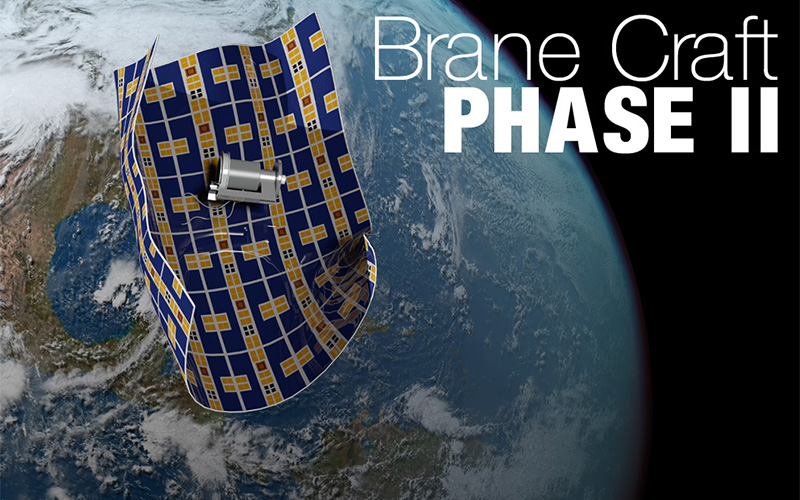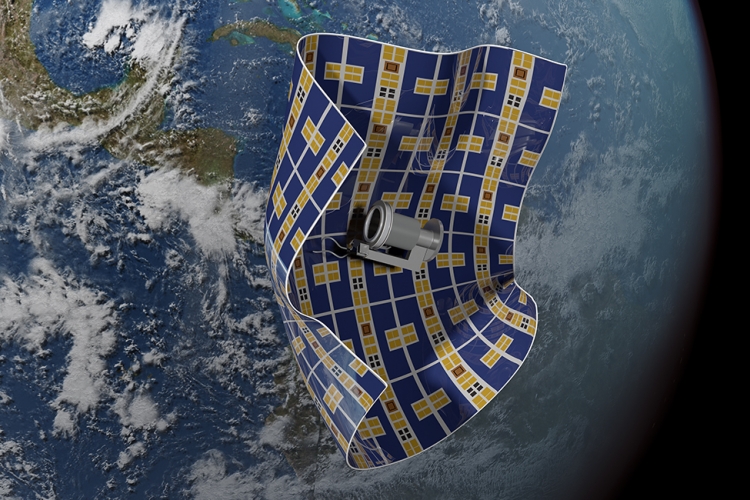Space debris is one of several terms used to describe the assortment of defunct manmade objects floating around in space and Earth’s orbit as the result of space missions, no longer serving any function. These objects include used rocket parts, old satellites, and fragments created from the disintegration and collisions of the debris itself. On Earth, garbage that is not properly disposed of can be hazardous and in space, debris is no different.
The Danger of Space Debris
Space debris can be harmful to active spacecraft and satellites by causing collisions that can damage a rocket’s solar panels or a satellite’s optical parts. Large pieces of debris can even penetrate a spacecraft, causing serious damage and in turn, create even more space debris. Orbiting debris poses a real threat to space missions and assets, prompting increasing interest and necessary action in their removal.

Brane Craft Wins NIAC Awards for Removing Space Debris
Aerospace continues to make pioneering strides in the field of space debris removal with the development of the Brane Craft proposal by Dr. Siegfried Janson, who was awarded a 2017 NASA Innovative Advanced Concepts (NIAC) Phase II award. Winners of the NIAC award are selected for their potential to revolutionize the future of space exploration. Brane Craft, which was preceded by a Phase I grant in 2017, investigates the possibility of developing a small, flexible spacecraft that envelops and removes space debris from the Earth’s orbit.
While NIAC Phase I awards support the initial definition and analysis of a concept, more time and resources are required for award recipients to refine their designs and explore various methods of implementing the new technology. Phase I grants are generally $100,000; researchers who go on to qualify for Phase II awards receive up to $500,000 for another two years of work.
“The 2017 NIAC Phase II studies are exciting, and it is wonderful to be able to welcome these innovators back into the program. Hopefully, they will all go on to do what NIAC does best—change the possible,” said Jason Derleth, NIAC program executive. “We look forward to seeing how each new study will expand how we explore the universe.”
How Brane Craft Works
Janson’s concept of the Brane Craft is a flat 3-foot x 3-foot spacecraft that looks like a piece of wrapping paper. Less than half the thickness of a human hair, the Brane Craft is exceptionally light, maneuverable, and fuel efficient. The Brane Craft can be deployed to collect orbiting space debris by wrapping itself around the item, then lowering it down to burn up in Earth’s atmosphere. The concept can best be compared to an automated spot cleaner in space, whose mission is limited only by its fuel payload. Another advantage to the Brane Craft is that it is also cost efficient; launching things into space costs an average of $10,000 per lb.; however, one Brane Craft weighs less than 3 oz.
Janson’s brain (or Brane) child currently includes an experimental ionic liquid thruster system developed by NASA, endowing the 30-micron-thick spacecraft with a very high thrust-to-weight ratio. It would also be able to travel long distances, allowing for missions in which multiple space debris fragments can be contained and disposed of at once. These features also lend themselves to applications far beyond the removal of space debris.
“Brane Craft prospectors could land on any near-Earth asteroid, such as Phobos, Deimos, a wide variety of main belt asteroids, or orbit Mars or Venus, and return,” Janson said. “Brane Craft could access just about any orbit within cislunar space [between Earth and the moon] several times, with fuel to spare.”
The Development of Brane Craft in Phase II
Janson said the Phase II effort will analyze and document the benefits, limitations, mission operations, and size scaling of the Brane Craft for removing orbital debris. He will also attempt to execute laboratory demonstrations of thin-film electronics for communications, command and control, power conditioning, sensing, and shape control. “We will identify the most promising fabrication technologies, develop a technology roadmap, and provide recommendations for further development,” he said.
Janson’s Brane Craft concept is at once cutting edge and anticipatory. In keeping with Aerospace tradition, the Brane Craft presents a visionary concept that stands to dramatically transform space missions by way of ingenuity, economy, and previously unexplored ideas.







